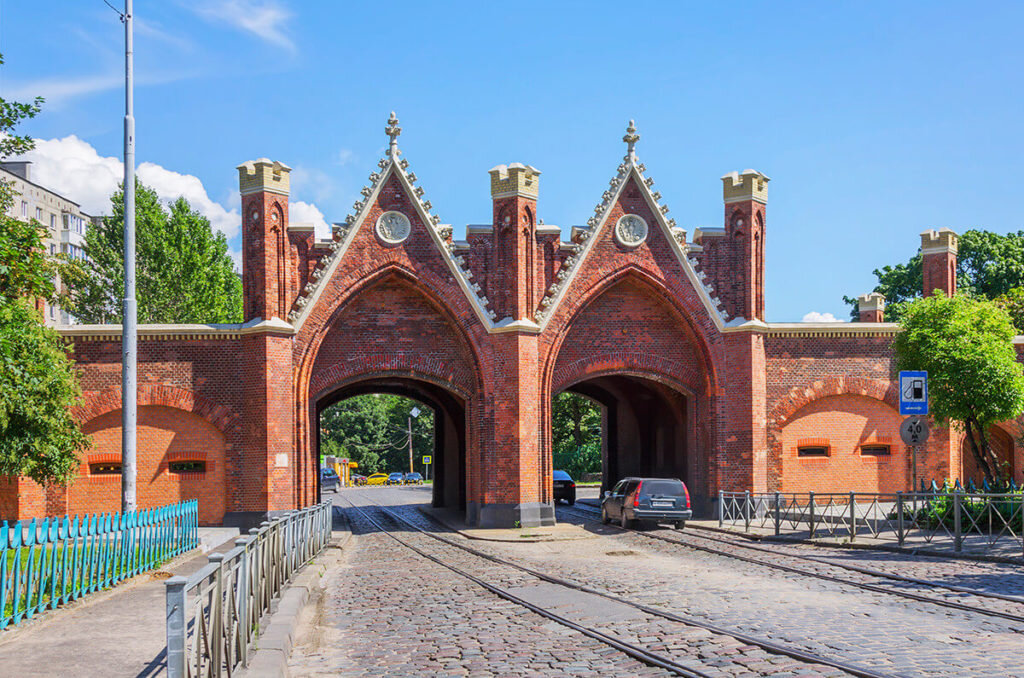free
Country:
Region:
Value:
Visit duration:
Price (adult):
free
Why Top:
Городские ворота с башнями и декоративными элементами.
Description:
Originally built of wood in 1657 near Königsberg’s fortifications, the gate was rebuilt in brick by order of Frederick II of Prussia. In 1843 it underwent a major renovation, gaining pointed pediments, cruciform sandstone flowers, stylized leaves, coats of arms and medallions. Bas-reliefs of Field Marshal Hermann von Boyen and Lt.-Gen. Ernst von Aster flank the passage. Executed in pointed-arch Gothic, its proportions lend a sense of height despite its modest size.
Facts:
– First wooden gate – 1657; replaced in brick in early 18th c. by Frederick II.
– Major renovation and decoration – 1843; local craftsmen.
– Style – Neo-Gothic: pointed arches, arrow-like pediments, stone reliefs.
– Boyen and Aster sculptures added 1843.
– Span height ~4 m; carriageway ~6 m wide.
– Only one of seven gates still serving its original transport function.
– Protected as a federal architectural monument.
Significance:
Federal; a cultural symbol of Kaliningrad, architectural monument.
Categories:
Why visit:
Interesting:
Fitness level:
Best visit time:
Do:
short historical walk
visit to the Marzipan Museum in the wing
tram-spotting
Access:
Roads:
Facilities:
Open:
Attendance:
Emergency:
112
Info:
Safety:
low crime; heavy street traffic—watch when crossing; arches become slippery when wet
Clothing:
comfortable shoes, layered clothing in shoulder seasons, warm coat in winter, light rainwear in summer
Climate:
Temperate continental with maritime influence: mild summers, cold damp winters.
Tips:
visit early to avoid traffic peak; see the gate’s illumination at dusk; combine with the Marzipan Museum visit
Connection:
no Wi-Fi; reliable 4G/LTE coverage in the city center
- Borneo
- Unadsdalur Church
- Indonesia
- Ratmanov Island
- Haiti, unfiltered: how to travel smart and fall in love with the country
- Dagestan: between the grandeur of nature and the challenges of tourism
- Teatime at Cape Town’s 5‑Star Mount Nelson Hotel
- Tuareg
- Kamchatka
- Luo
- Morocco
- The World of Varans
- Hiroshima’s nuclear blast: how tragedy reshaped travel routes
- Traveling to Russia
- Tourism in Nigeria: Challenges, Growth, and the Path to Regional Leadership
- Moab
- Majestic Grand Canyon – Unique Nature of the USA
- Sydney
- And in Africa the mountains are this high
- Win a four-night Greek getaway for two in one of the most stylish resorts in the Aegean courtesy of Sani Resort











